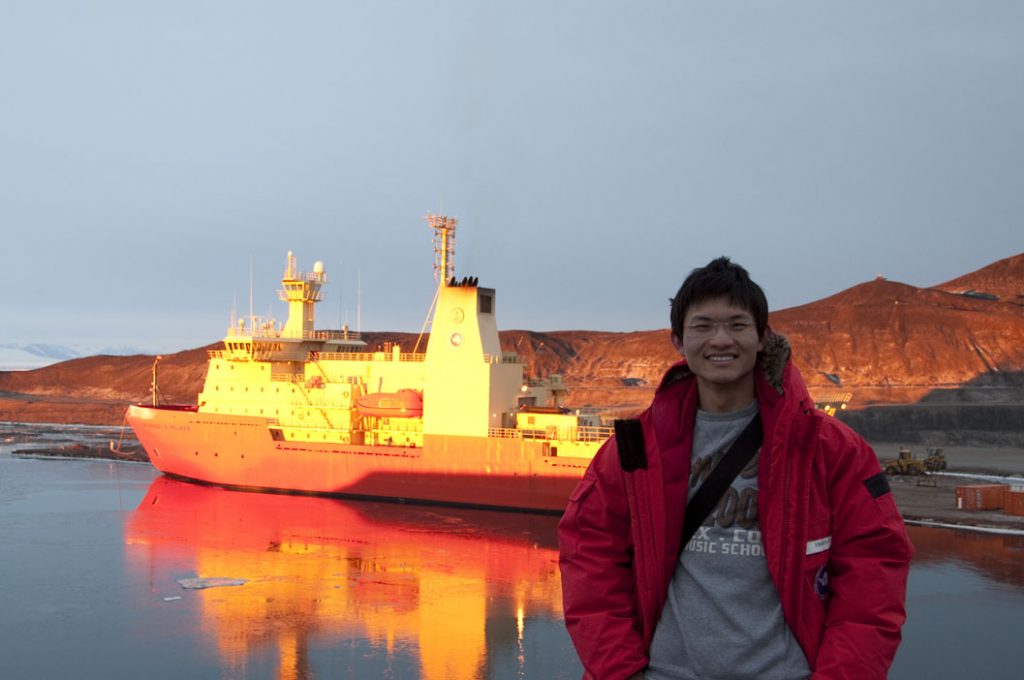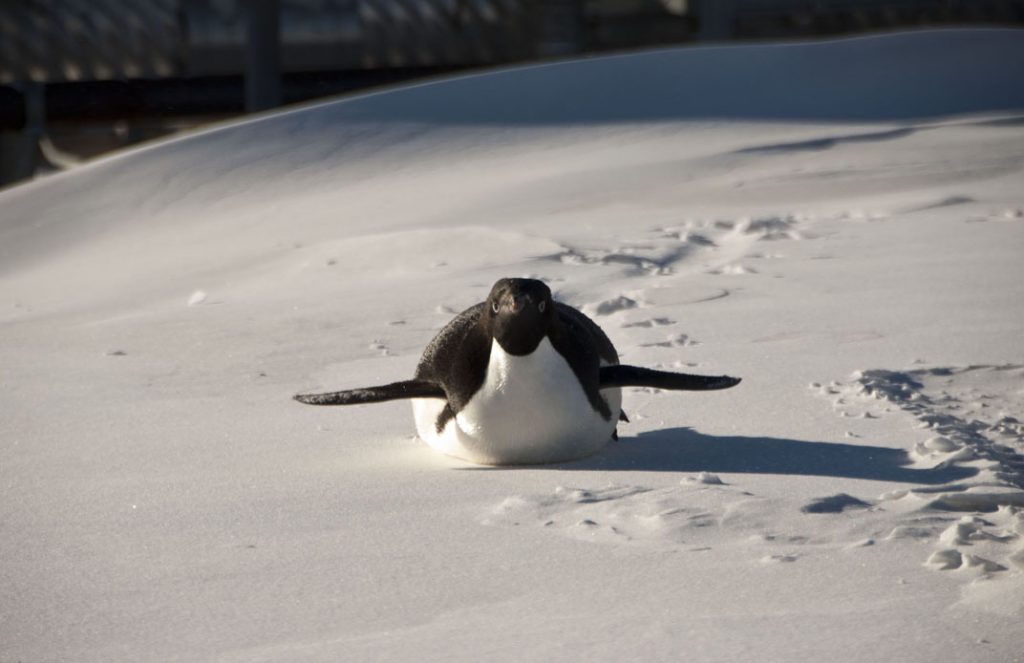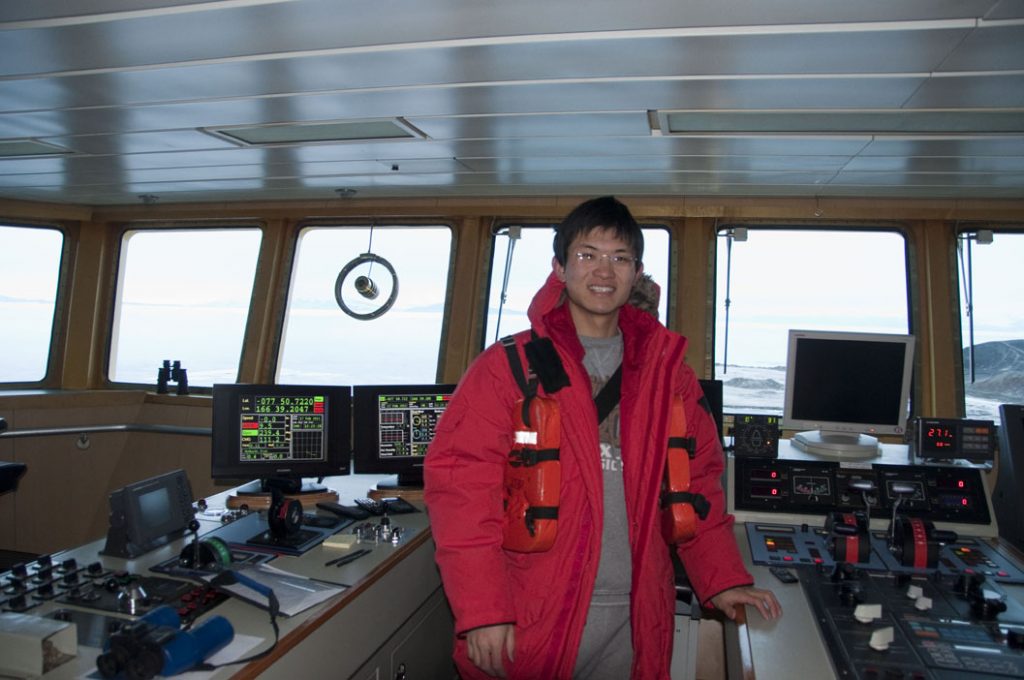By mid-February 2011, I was “left” alone and became the sole operator for our Fe Boltzmann lidar through the first winter season at McMurdo.
What a wonderful and big family we had in the summer at McMurdo! I really enjoyed working with my professors and colleagues. By January 22, 2011, my advisor, Prof. Xinzhao Chu, flew out of Antarctica and returned to the University of Colorado. Prof. Chet Gardner left at the end of January and flew back to the University of Illinois. Two of the summer crew, Dr. Wentao Huang and Mr. Weichun Fong, were finally redeployed by February 14, 2011.
On Feb. 15, the second day after the summer crew left, the sky became clear and I went to Arrival Heights to turn on the lidar system. About 12 hours of data were collected, and I was happy and confident in running the lidar by myself.
Now I have the “freedom” to run the lidar whenever the sky is clear and no longer need to worry about the electromagnetic interference (EMI) issues. I am really grateful to many people who helped resolve the EMI issues, especially my advisor and USAP engineers. Under their push for the installation of 3-phase line filters in mid-January and the installation of a “separation” transformer in early February, the Arrival Heights EMI between LIDAR and VLF experiments has been eliminated completely. Our tests in February show that the LIDAR doesn’t have any effect on the VLF noise background anymore. Both US and Kiwi VLF noise spectrum background is completely independent of LIDAR operation. Furthermore, the VLF noise background becomes even better than that prior to the LIDAR installation.
The landscape began to change in late February. The golden color painted by the sunset and sunrise makes McMurdo a different town than in the summer. Here are a few shots. The first one is the Palmer gleaming gold in the shine of the setting sun. It was the last time that the Palmer had been anchored inside McMurdo harbor for the 2010~2011 season. I was also lucky to obtain a “VIP” tour, when I met a graduate student studying marine biology who was on a Palmer cruise with his advisor. The Palmer, named after a U.S. seal hunter Nathaniel Palmer who was believed the first to discover the continent, has icebreaking capability to support around 90 crew members for a 2-month cruise. At the end of my tour, I was happy to be a “Captain” for a while in the control room.
As a gateway to access McMurdo, Christchurch, New Zealand, is familiar to every USAP participant. An earthquake, magnitude 6.3, struck the city again in February. The Feb 22nd earthquake was closer in distance and shallower in depth to the city of Christchurch than its September 2010 quake. At that time, there were 388 USAP people in Christchurch, and at McMurdo there were several hundred more waiting for the flight coming from Christchurch. What’s worse, we encountered the first severe storm since I came down to McMurdo. The storms in Pegasus field, our airport, reached Condition One. In Mc town, it was Condition Two. The storm buried the ice runway, and made the road from Scott Base out onto the ice shelf en route to Pegasus disintegrate rapidly. It seemed the bad things came altogether. However, we have an incredible group of people in this program, who truly shine in these difficult times. Moving fuel lines, building a new road, and cleaning were quickly done by McMurdo personnel. Finally, all the summer people flew out of the ice by March 5, 2011.




